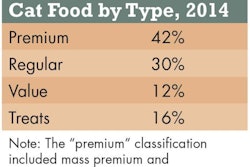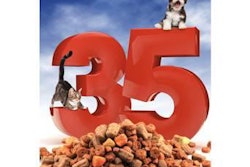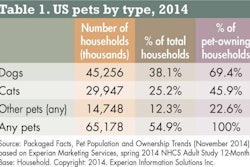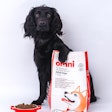Part of the purpose and function of the Association of American Feed Control Officials (AAFCO) is to foster uniform interpretation and enforcement of US state laws and regulations as they pertain to animal feeds, largely accomplished through promulgation of the Model Bill & Regulations as well as the establishment of ingredient definitions. Therefore, success in the US petfood market requires intimate familiarity with the contents of the AAFCO Official Publication (OP).
While it contains vital information, the OP can be difficult to follow; i.e., I've never heard anyone refer to it as being "reader-friendly." Over the last 25-plus years, it has been my constant work resource, and rarely a day goes by when I am not looking up something. Still, while I am pretty adept at finding what I need in the OP quickly, some changes in the recent past have hampered my abilities.
One factor that had complicated matters is the fact that there is now both a printed and an online version of the OP. The print version is published only once a year. The online version, however, can be updated throughout the year, particularly after each meeting. So, what may appear in the online version soon after this January's "mid-year" meeting may not show up in the print version until 2016.
On which version should you rely, then? Regulations may be amended, or the status of ingredients changed, and if you do not search the online version you may not realize it for some time. So far, there has been recognition that not everyone in the regulated industry will have access to the OP online, so any recommendations to states with regard to enforcement of new regulations refer to the printed version.
As a practical matter, the states would have to incorporate the changes into their own regulations before they become enforceable, anyway, so there would be time between when a new or amended regulation appears in the OP and the need for compliance. However, it is not impossible to imagine a state taking action based on an ingredient definition as it appears online while you were relying on what was in the book, or vice versa. Personally, I tend to use the print version much more often for routine searches, as I find it easier to navigate, though have learned that double-checking my findings with the online version is a prudent practice.
A new or amended AAFCO ingredient definition is put into "tentative" status when it first appears in the OP, and only a year or two later is it usually moved to "official." While the AAFCO Model Regulations for Pet Food and Specialty Pet Food are silent on the matter, the overriding general Model Regulations [Regulation 6(f)] makes it clear that "tentative definitions for ingredients shall not be used until adopted as official unless no official definition exists."
This has never been an issue until recently, because at least during my tenure the practice has been when an official definition was amended, it would always be moved back to tentative. In that way, there was never more than one definition for an ingredient in the OP at one time. Now, however, there may be two and occasionally three definitions for the same ingredient existing all at once. In those circumstances, which do you use?
In most cases, one should rely on the official definition until a tentative definition takes its place. However, an issue came up when the name of an ingredient itself, rather than its description, was amended. There are currently two definitions for the same ingredient, "Stabilized Rice Bran" (#75.10) and "(blank) Stabilized Rice Bran" (#T75.10), with the blank to be filled in with the method of stabilization (e.g., "Heat").
One state feed control official is presently insisting on use of the tentative definition at this juncture, citing the fact that the existing feed term for "stabilized" (which may be added to any ingredient name when appropriate, not just to rice bran) already requires the method of stabilization be declared. I don't know that position would hold up to a serious challenge, as the consensus among other states is that the official definition for stabilized rice bran (i.e., without "heat") is in fact the correct and proper name to use. Fortunately, the other states have also said they would not object to using the tentative name in the interim.
In an effort to eventually bring more order and structure to the host of existing feed ingredient definitions, some changes have actually made searches for definitions a bit more complicated. For example, while previously the sections were all in alphabetical as well as numerical order, the section previously entitled "18. Chemical Preservatives" is now simply "18. Preservatives," though it is still located between "15. Brewers Products" and "21. Citrus Products." Also, a new section "73. Technical Additives" now appears between "71. Other Oilseed Products" and "74. Processed Animal Waste Products." The new section consists of many ingredients previously listed in "87. Special Purpose Products," though when moved the ingredient definition numbers were not changed to correspond with the new section number.
So, while Definition #87.1 Algae Meal is still in Section 87 on page 442 of the 2015 OP, Definitions #87.2 Lignin Sulfonate and #87.3 Silicon Dioxide are now in Section 73 on page 423; i.e., 19 pages before Algae Meal. In fact, Definition #87.4 Verxite currently appears in both sections (I'm not sure to which section it is eventually intended).
While never easy to use, gleaning the OP for information is a bit more difficult now than in the past. Still, I'm glad the information is there. Any expectation of uniformity between the states without the OP and all the work AAFCO puts into it would be unimaginable.



















